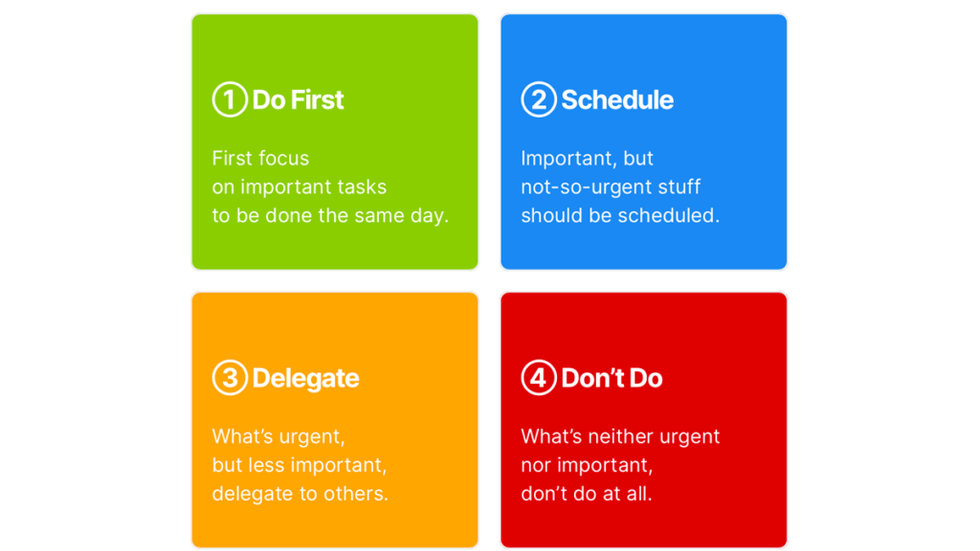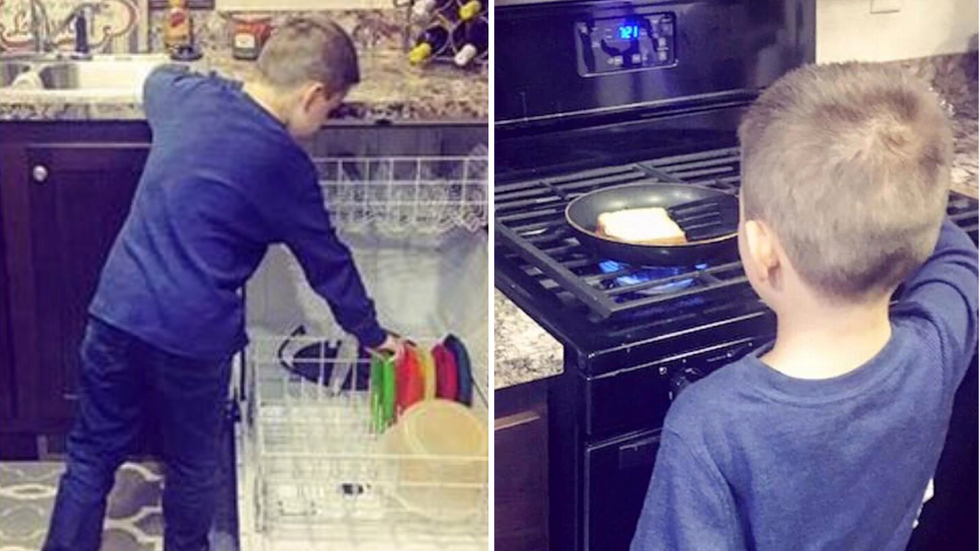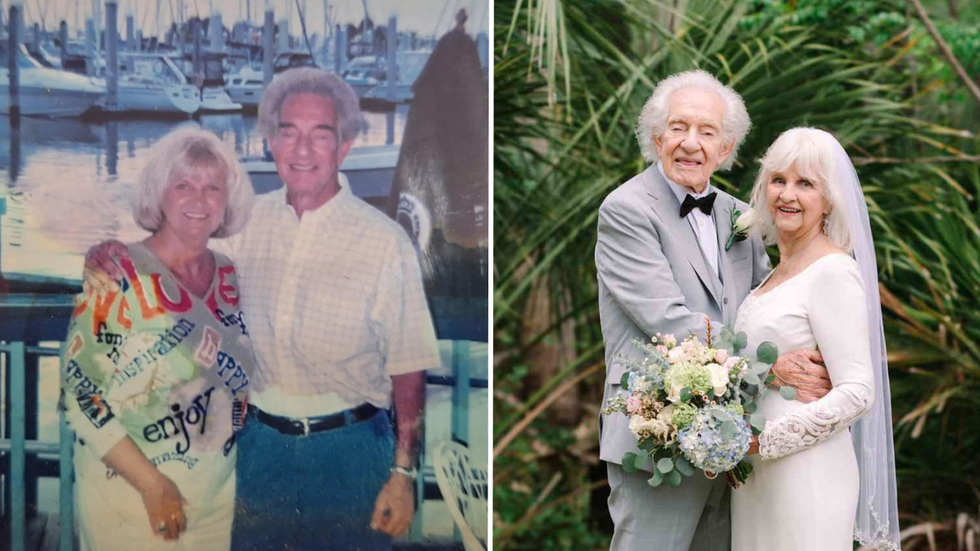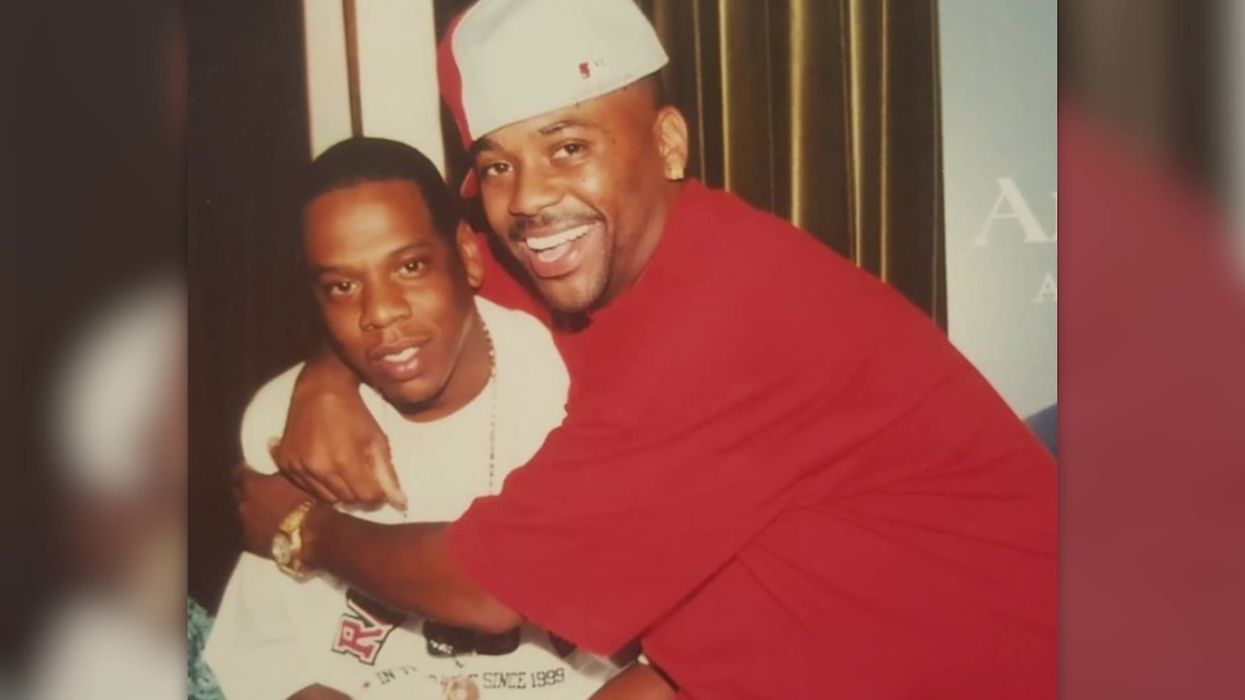
How to Focus: 12 Tips to Improve Concentration
We live in a culture of constant distraction where our ability to stay focused is continuously compromised by the idea of the next best thing.
We all wish we had to concentration of Bradley Cooper's character in Limitless, but the opposite seems to be true. Whether we’re watching cat videos, scrolling through Twitter or forever swiping through online dating profiles (even after starting several conversations with strangers), the evidence of our collective reduced attention span is all around us.
Rather than eliminating the distractions of other people and staying focused on one potential person the whole time, we spread our focus so thin that we barely get to know anyone at all, let alone make genuine connections. Of course, this isn’t all your fault, the systems around us are designed to keep us hooked on the promise of the next swipe.
And it’s not just online dating, either.
This type of attention-pull is happening all around you all the time and interfering with your ability to stay focused (and therefore accomplish your personal and professional goals). Fortunately, there are several expert strategies that can guide you on how to pay attention, stay focused, and ultimately improve your concentration even when it seems like the whole world is determined to distract you.
1. To Maintain Focus, First Find Your “Big Focus”
It sounds simple, but this is a step so many of us overlook because we assume it’s obvious to ourselves. For example, a university student may assume their big or overarching and guiding focus is on graduating, and a single parent may feel their focus is on their children, but their actions may not actually be aligned.
Finding this big focus is important because:
- It reveals your underlying motivations AKA monday motivations or the things that get you out of bed on a Monday
- It shows you how to focus by eliminating distractions
- It helps you develop a system of focused work (ie., it helps get your priorities in order)
How to Stay Focused: A To-Do List
Take a lesson from billionaire Warren Buffet, a person who obviously had no problems prioritizing his financial goals and maintaining focus over the years.

The story goes that Buffet passed along some words of wisdom to his personal pilot Mike Flint about finding your big focus with a two list strategy. Buffet was helping Flint figure out how to focus when it came to his career goals, but you can use this same strategy for improving focus and maintaining focus in every aspect of your life.
Here’s how it works:
- Step 1: Write down your top 25 career, marriage, parenting, volunteering, etc. goals on a single piece of paper.
- Step 2: Circle only your top five options.
- Step 3: Put the top five on one list and the remaining 20 on a second list.
- Step 4: Put the second list away somewhere safe but out of your line of sight (out of sight out of mind, right?).
- Step 5: Start with the first item on your list of five goals and work your way down the list one by one (not all at once).
Only after each of the five priority goals are achieved through focused work can you pull out the other list. By this point, you may find those other 20 things aren’t as important as you once thought, or you may find that you’ve already managed to achieve them by default by improving focus on the other five. But you will have started developing some healthy habits, and the good thing is that in many cases this can only take a few minutes and some mental energy.
2. Determine a daily SMART goal
Do you know why the phrase “Rome wasn’t built in a day” is such a popular cliche?
Because humans have a tendency to dream so big and to focus so much on the end goal that it actually starts to distract from the smaller, daily goals required to accomplish such incredible feats.
Or, if you’d rather, we tend to put the cart before the horse or stop seeing the forest for the trees. When we associate focused work with these large, hard-accomplish tasks, it’s no wonder that some of us get distracted!
Breaking down goals with the SMART method can help with improving focus, and also help you stay focused throughout the day.
What are SMART goals?
- Specific. What exactly needs to be done?
- Measurable. How will you track your progress?
- Achievable. Is it realistic? Can it be done by the deadline?
- Relevant. How does it fit with the overall plan or bigger goal?
- Timely. When does it need to be done?
Ask yourself the SMART questions while goal setting for each day or week or even month, depending on the size of your goal. For example, If you want to start walking more, you need to break that down in the following ways.
- S: Walking “more” than your current average which, for example, could mean walking 5 times a week instead of 3 times.
- M: Steps measured by step counter or simply a tally of “times walked per week.”
- A: You need to ask yourself about your current schedule, any conflicts, and potential pitfalls you can see in your way
- R: It will ensure you walk 2 more times per week.
- T: This week. (You can repeat next week but start in one-week chunks)
If you’re wondering if daily or weekly goal setting is a little extreme, it’s not. Again, it’s part of the process of breaking down goals into more realistic tasks that you can stay focused on.
3. Evaluate Priority Urgency with the Eisenhower Matrix
It’s not you, it’s the fast-paced culture we live in that makes everything feel as though it is an urgent and important task. If you work for others or raise little humans or animals, you know exactly what we’re talking about. From the email that needs answering ASAP to the child who demands attention now to the dog whining at the door, when you can’t eliminate distractions, everything can seem equally urgent and important because it’s equally distracting.
You can train your brain by using something called the “Eisenhower box” or matrix to help you cut through the white noise of society and actually figure out what is urgent, what is important, and what can wait.
Simplifying things like this helps you concentrate on what really matters.
How the Eisenhower Box Works
“What is important is seldom urgent and what is urgent is seldom important.”
- Dwight Eisenhower
The Eisenhower matrix works on the assumption that all tasks can be divided into four categories that have associated action items:
- Urgent and important (tasks you will do immediately).
- Important, but not urgent (tasks you will schedule to do later).
- Urgent, but not important (tasks you will give to someone else).
- Neither urgent nor important (tasks that you will eliminate).
Try it for yourself
Make a square and divide it into four, assigning each box one of the four categories. Now take your proverbial “To Do” list and start plugging tasks into whichever box fits best. When you’re done, you’ll have a renewed sense of what you should focus on and you can actually stop thinking about the others.

4. Create a Dedicated Space for Focused Work
Now it’s time to start putting things into action for a better performance. With your vision clear about where you need to maintain focus and improve focus, you can begin setting the scene for success.
First things first is creating a quiet space free of negative distractions (ie., things that compete for your attention).
Common negative distractions include:
- Text messages
- Social media and email pings
- TV or streaming videos, pod
- People (coworkers, peers, or family)
- Pets
Of course you don’t need to avoid these things forever. No one’s asking that. But consider this: Back in 2003, the typical person checked email once every five minutes, and this switching between tasks cost them over a minute (64 seconds) of productivity and focus - each and every time! Online distractions can be tough to handle without some structure.
Considering nearly 3 decades have passed since then and we’ve become even more obsessed with our phones and having access to everyone and everything at the tip of our fingers, we’re probably losing a lot more time and concentration during the day than we realize.
Dos and don'ts of creating a space for focused work:
- Do designate a single workspace per project. This means you should avoid painting at the same desk where you do your studying or other focused work.
- Don’t work from a different location every day, because you run the risk of the “everything is new and shiny and distracting” thing happening.
- Do keep things organized in this space.
- Don’t decorate without thinking how certain pieces (of art, furniture, etc.) will impact your ability to concentrate on your work.
- Do make sure you have everything you need in this space so you’re not running in and out throughout the day for small things like printer paper or charging cords.
- Don’t face a window if you’re easily distracted.
- Do tell others this is a space for working (not playing, socializing, arguing, etc.)
5. Take Advantage of Positive Distractions
Many famous writers and great thinkers (think William Wordsworth, Charles Dickens, Virginia Woolf, and Henry David Thoreau) have been known to take a good old walk outside as a way to recharge and refocus their attention on their craft.
As such, walking for writers is what’s considered a positive distraction (ie., something that encourages people to take healthy breaks that help them focus again later).
Aside from walking, you can try these other positive distractions to help you focus:
- Meditating
- Deep breathing
- Doing yoga
- Gardening (indoor gardening and outdoor gardening)
- Swimming (ideally in nature)
- Spending quality time with pets and other animals
Only you know what is a negative and positive distraction. Trust your instincts on this, too. Just because someone else finds blasting loud music helpful for focusing doesn’t mean it will have the same effect on you.
6. Practice the Pomodoro Technique
The Pomodoro technique uses strategic timekeeping to maximize your concentrating potential. It will require your focus but also some self-discipline.
Here’s how it works:
- Set a 25 minute timer and get to work.
- When the alarm sounds, take a 5-minute break.
- Repeat steps 1 and 2.
- Once you’ve done four rounds of this, you can take a longer break, approximately 20 to 30 minutes.
This technique works incredibly well if you can have the self-discipline to get back to work and regain focus relatively easily after a 5-minute break. If you struggle with ADHD or simply getting sidetracked, this may be additionally challenging as many other attention and focus grabbers can pop up within a 5-minute window.
If you want to try this and are concerned about your ability to return to task and keep paying attention, it may be helpful to stay in your area dedicated to focused work and simply do a few stretches and take a sip of water before getting back to work (rather than leaving the room to go check your mail).
7. Improve Your Sleep Quality
Not getting enough sleep on most days will negatively affect your ability to concentrate and focus to make new memories and recall past ones. When you're struggling to remember things, it makes focusing on one task that much more challenging.
Here’s how much sleep is recommended based on age, according to the CDC:
- Adults aged 18 to 60 years old need 7 or more hours a night.
- Adults over 60 may need up to 9 hours per night.
Below are some tips on improving sleep quality.
Stop watching TV and phone scrolling: (turn off any blue lights) 2 hours before heading to bed. Blue light is a known sleep disruptor because it makes your body think it’s still daytime (interferes with your natural melatonin production) and is one of the reasons why so few people get enough quality sleep these days.

Avoid caffeine after lunchtime: Caffeine levels stay elevated for up to 6-8 hours after your last consumption. Leaving as many hours as possible between your last cup of coffee, energy drink, or other caffeinated beverage or supplement is best for helping your system switch to nighttime and sleep mode.
Maintain a set sleep and wake schedule: Keeping the same bedtime and wake time even if it’s the weekend improves long-term sleep quality because it works with what your circadian rhythm wants (a consistent daytime and nighttime loop). Not doing this messes up the loop and leads to changed production in melatonin.
8. Find More Moments for Mindfulness
Mindfulness is a specific type of meditation that involves techniques like breath work, guided imagery, and body scanning to help improve your focus and teach you how to concentrate in every moment. You can find a mindfulness app on your phone that can become a digital teacher (just search meditation or mindfulness in your app store).
If you’re more of an extrovert or are looking to connect with others with similar goals, you can find online mindfulness groups or classes to join in on from anywhere in the world.
Mindfulness is also good for reducing other major distractors including:
- Stress
- Anxiety
- Depression
- Insomnia
- Relationship problems
Working in one area has this holistic way of helping out all the others. This means when you work on improving your sleep health, you’re also working on your mental health.
9. Forget About Multitasking
Multitasking is a messy way of tackling tasks that divides your attention in such a way that no single task really ever gets your full potential. This is why some productivity and success experts encourage people to single-task as much as possible.
The logic is really quite simple: You can accomplish 10 one-item tasks much more easily than 10 tasks at once. Common pitfalls of multitasking include:
- Increased distractibility
- Memory problems
- Lower productivity
- Lower efficiency
If you’ve always considered yourself a multitasking pro, you may be thinking this section doesn’t apply to you but it really does. People who perceive themselves as being good at multitasking can’t see the productivity they’re missing out on when switching their attention between tasks. Remember the time wasted in between looking at emails and getting back work? It’s the same thing here.
10. Consider Some Caffeine
Caffeine is a classified stimulant that has found lasting popularity across cultures. Much of the appeal is the very fact that the right dose can help us feel focused and curb feelings of fatigue. The caffeine found in your coffee, black tea, chocolate, and energy drinks all work on the brain chemical messenger called dopamine, which we mostly associate with our sense of reward, but it actually controls the ability to focus and maintain concentration, too.
Anyone who’s ever had a bit too much caffeine knows though that there is a limit to this drug’s benefits. Too much caffeine (ie., 4 or more cups per day) will leave you feeling jittery, anxious, and even sick to your stomach. Mood changes like irritability and feeling on edge can further distract you from the task at hand.
Try to have a cup of coffee (or caffeinated tea) in the morning upon rising and limit yourself thereafter. If you have a hard time controlling the amount of caffeine you consume, and are noticing it’s having negative effects on your ability to concentrate or sleep, it may be time to consider switching from coffee and tea to another natural stimulant.
Examples include:
- American ginseng which can help with fatigue
- Theobromine is a natural stimulant which is found in cacao and contributes to its cognitive benefits
- Ginkgo biloba which supports healthy brain functioning
- Cordyceps or Lion’s Mane mushroom elixirs
11. Set aside Time to Worry
Sitting and thinking about your worries creates concentration blocks, but it’s not always the case that we’re living life without worries. Okay, it’s never that case. So we need to set aside some dedicated time to worry or ruminate about the things that keep asking for attention.
Many mental health therapists, life and career coaches, and spiritual guides will tell you to take 20 minutes per week for your worries. This looks like sitting down with a timer and thinking about every single thing that’s worrying you or that you’ve been ruminating on with unease.
Twenty minutes per doesn’t sound like a lot but when you dedicate the whole time to this one task, you can accomplish so much mental clarity and a renewed sense of focus in such a short time. The biggest benefit of this dedicated 20 minutes is that it creates space in every other minute of the week for you to focus on the important and urgent tasks.
Get the Most of Your 20 Minutes
So the reason why 20 minutes per week is enough is because every second of that is spent on concentrating all your efforts on your worries.
In order to do this successfully, it helps if you have the following things:
- 20 minutes alone: This means after the children are in bed and not while sitting on the couch next to your partner, roommate, or other family member. This is a solo activity focused on your worries only.
- Have some water nearby: Worrying is work and you may feel many other emotions that may result in physical responses like crying, coughing, nose dripping, or other. Taking a sip of cool water can help to calm things down during this process so you can stay focused.
- Do this in a separate space from where you work: You don’t want to worry in the same space you work because it creates a negative association to the space and gives off negative energy. Carve out somewhere else in your home, the closest coffee shop, in your car, or during one of your walks to maintain focus.
12. Don’t Forget to Eat Healthy and Stay Hydrated
Eating healthy and staying hydrated can have a significant impact on your ability to concentrate and maintain focus. One study demonstrated dehydration’s direct relationship with brain function decline by showing that as the participants lost more water (ie. became increasingly dehydrated), they increasingly made more errors during attention-related tasks.
Staying hydrated according to the general recommendation from The U.S. National Academies of Sciences, Engineering, and Medicine, means consuming (in total):
- 11.5 cups (2.7 liters) a day for women
- 15.5 cups (3.7 liters) a day for men

This includes fluids from water, but also beverages like teas and juice, and from foods. It’s estimated that most people get an average of 20 percent of their water from the foods they eat.
Eating healthy means getting a variety of fresh foods into your daily diet and also not letting yourself get hangry (hungry and angry). Make eating a regular (and ideally pretty consistent) activity.
You can start by choosing more vibrantly colored foods more often and trying to reduce the amount of highly processed foods and convenience or fast food items you consume.
Some foods that are particularly good for brain health and focus include:
- Fatty fish like salmon that are rich in omegas (good for brain health and reducing distracting migraine pain)
- Blueberries, pumpkin seeds, and dark chocolate which are all rich in brain-healthy antioxidants
- Walnuts (they look like a brain for a reason)
Still Not Feeling Focused?
While it can be difficult to pinpoint, there is always at least one reason behind your distraction when you’re trying to learn how to focus better. You may need some more time to practice and strengthen your focus muscle. Give yourself some time to adjust.
However, if you have tried making realistic changes to your daily life, have given them some time to make a difference, and still can’t seem to focus, it may be time to talk to your doctor.
Certain health conditions even beyond ADHD, including mental health conditions like depression, anxiety, and substance use disorder can interfere with your efforts to focus and increase your self-discipline. The good news is that help is available for focusing issues related to health conditions. Whatever’s stopping you from focusing, know that there is a solution.































